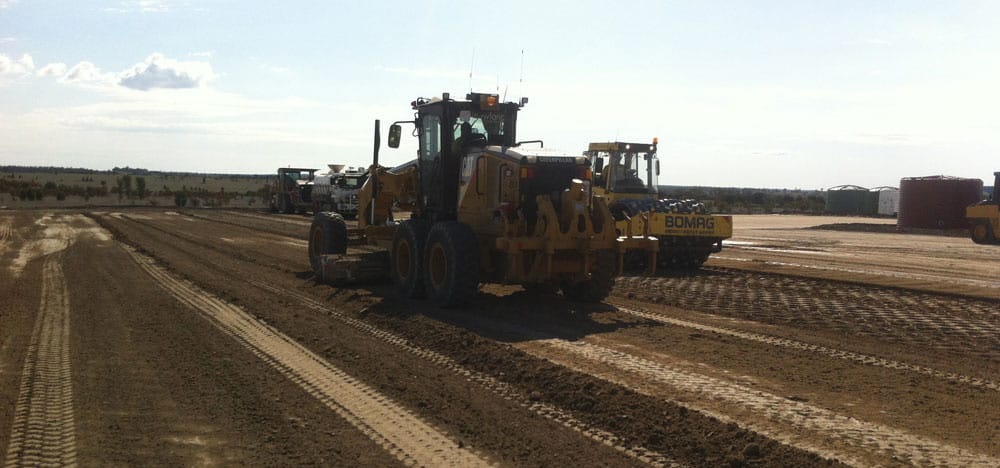
It is important in various construction fields such as construction of roads, buildings, underground infrastructure, etc. Stabilization of soil can be performed in different ways and the choice of the methods depends on type of soil, treated soil purpose, desired result, weather conditions, etc. Wide categorization of stabilization methods is into physical and chemical methods. Physical methods change mechanical properties of soil, while chemical measures change both mechanical and chemical properties.
The most abundant physical stabilization of soil is compaction. It is performed through applying certain static or dynamic loads on targeted soil. The result is denser soil with higher load bearing capacity. Through increasing soil density and thus decreasing soil pores volume, waterproofness is increased. However, this doesn’t completely protect soil from moisture influence, especially if the soil is expansive. Present water increases plasticity and soil volume which causes deformation of surface layer and thus jeopardises roads and buildings. This method might be appropriate for regions with extremely dry climates and cohesive soils.
The other popular mechanical method of soil stabilization is drainage. Drainage works through draining away excessive water and thus decreases influence of moisture within soil. However, if significant rate of expansive minerals present, which is common case, this method is not appropriate, since these minerals absorb water within soil before it is drained. The drainage system is quite expensive to build as it consists of system of canals, pipes and pumps.
Common chemical stabilization of soil is application of cement. The application procedure is as follows: pulverized soil and Portland cement are mixed with water, and then compacted. The mixture of soil and cement becomes a hard material as the cement hydrates. Since there are weak intermolecular forces in cement stabilized material, load induced cracks easily form. Furthermore, cement production is extremely carbon positive. Due to complex application procedure, cement stabilization requires extra machinery and labour.
Stabilization of soil with lime is also very popular. It is useful for treatment of clayey soils but it is not effective for sandy soils. The amount of lime required for stabilization is between 2 to 10% of the soil. The most effective among lime based stabilizers is quicklime but for safety reasons hydrated lime is often used. The same as cement, quicklime is also in form of powder and it is highly reactive when in contact with water. For these reasons it is inconvenient for handling and quicklime dust easily spreads. Lime is produced by burning lime stone in kilns, which is extremely energy demanding process.
Global Road Technology offers products for stabilization of soil which are effective in treatment of all soil types. GRT products are certified environment-friendly and have very low carbon footprint. Soil strengths beyond 8 MPa can be achieved with as little as 1 % of GRT product. Comparative UCS results in cement stabilised type 2 gravels, require in excess of 5 and 6 %, and up to 8 % cement by mass for the lower sub-types. With the increased flexural strength GRT polymer treatment brings a wider scope of applications in pavement construction. Strengths far higher than that previously obtained in bound pavement design can now be considered without the associated shrinkage cracking, which leads to reflective cracking, and premature failure. Due to superior properties, GRT stabilizers are suitable for treatment of terrains which will serve as laydown yards, loading terminals, car parks, etc.
For more information on stabilization of soil or Global Road Technology products please contact GRT.
Are environmental regulations, health and safety concerns or potential profit loss a concern right now?
Contact Us Now